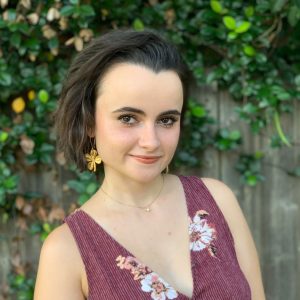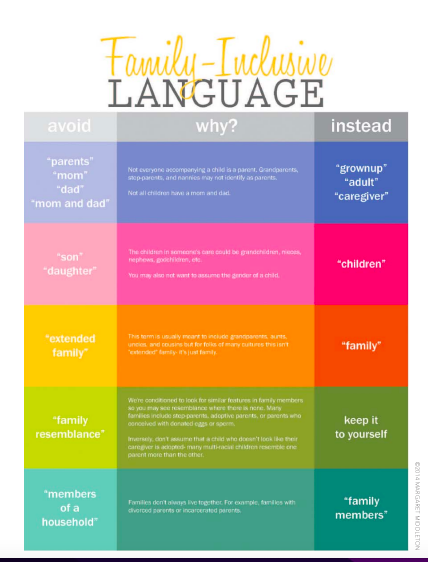Another academic year has passed, and it’s time for three new editors to take the reins of the Museum Studies blog! A huge thank you to Claudia, Jane, and Lucy for their hard work on the blog over the past year, and good luck with your future endeavors. We’re so excited to follow in your footsteps and keep producing great content for the Museum Studies blog!
For our first post, we want to take a moment to introduce ourselves and let you know what content we hope to bring to the blog this year…
Savannah Kruguer
 Hello Everyone! My name is Savannah Kruguer, and I am a second-year student in the Museum Education MA program here at Tufts. Growing up in Southern Maine, my mom would often take me and my two siblings to Boston to visit the Museum of Science. From an early age, I loved learning through discovery and hands-on activities at museums. My specific interest in living history sites and object-based learning began after an elementary school field trip to Old Fort Western in Augusta, ME where I got to prepare food in an open hearth and make an 18th-century bed. I found it fascinating to learn about the lives of everyday people through the objects they used.
Hello Everyone! My name is Savannah Kruguer, and I am a second-year student in the Museum Education MA program here at Tufts. Growing up in Southern Maine, my mom would often take me and my two siblings to Boston to visit the Museum of Science. From an early age, I loved learning through discovery and hands-on activities at museums. My specific interest in living history sites and object-based learning began after an elementary school field trip to Old Fort Western in Augusta, ME where I got to prepare food in an open hearth and make an 18th-century bed. I found it fascinating to learn about the lives of everyday people through the objects they used.
I enjoyed visiting museums so much that I wanted to pull back the curtains and explore the possibility of becoming a museum professional. I received my B.A. in Art Conservation and Anthropology with a minor in Museum Studies from the University of Delaware. During my studies, I worked as a preventive conservation intern at the Winterthur Museum Garden and Library and practiced archaeological conservation during a study abroad in Sardinia, Italy.
After undergrad, I continued to pursue my career as a museum professional by working as a conservation technician for the Naval History and Heritage Command, archaeological collections care technician for the Delaware Division of Historical and Cultural Affairs, and a living history interpreter for Mackinac State Parks.
I chose Tufts for my graduate studies because of the amazing museum education program and the school’s proximity to so many incredible museum institutions. Through all of my work experiences, I realized that I loved the educational role of museums and engaging K-12 audiences in programming. At Tufts, I have already learned so much about museum pedagogy, writing lesson plans, and DEAI practices. I look forward to the opportunity to use this blog to highlight current conversations in the field, share my museum adventures, and explore engaging museum exhibits and programs.
Francesca Bisi

Hello everyone! My name is Francesca Bisi and I am beginning my second year in the Art History and Museum Studies program here at Tufts University. I hail from Ferrara, a small city south-west of Venice. When I was growing up, I was surrounded by history and art—the looming presence of the Castello Estense, the medieval walls encircling the historic downtown, or the iconic terracotta that colors the city red. Living within a UNESCO World Heritage Site made me very aware of the power and beauty of history, and the importance of both preserving the past and paving the way for new and innovative ways of interpreting and presenting it.
That love never went away. We moved to the United States when I was young, and I remained here to earn my BA in Art History and Italian Studies from the University of Wisconsin-Milwaukee. From there, I hopped back across the pond to Europe, where I studied at the University of Edinburgh and received an MSc in History. Yet as I wrapped up the latter program, I realized what I wanted most was to return to art history and museum work.
My most treasured memories from my undergraduate experience were those spent in museums, learning about how to make the collections and the museum itself more accessible to visitors of all backgrounds. Tours for sight-impaired visitors, hands-on experiences unique to the contents of that specific museum, dedicated and driven staff, and storage with rows and rows of objects waiting for the spotlight were truly the thing that excited me most. When I saw that Tufts offered a joint Art History and Museum Studies program, I knew I had found the perfect fit for me.
My interests thus revolve mainly around curatorial and research work. I am specializing in Italian Renaissance art history, and my main focuses within that field are women, convents, queer studies, representations of the “other” or foreign, and depictions of cats. Writing for this blog provides a fantastic opportunity to explore these interests and share them with others. I look forward to engaging with museums in this new way and engaging in conversations with our readers!
Danielle Maurer
 Hey, y’all! My name is Danielle Maurer, and I am excited to enter my second year of the Tufts History and Museum Studies MA Program. Born and raised in New Orleans, I have been steeped in the intersection of history, arts, and culture for most of my life! After earning my BAs in History and International Studies at Louisiana State University in 2018, I enjoyed a variety of museum internships, including a summer program in the Metropolitan Museum of Art’s Medieval Art Department. In New Orleans, I worked in the National WWII Museum’s education department and the New Orleans Jazz Museum’s programs and operations departments for several years before moving to Somerville to attend Tufts.
Hey, y’all! My name is Danielle Maurer, and I am excited to enter my second year of the Tufts History and Museum Studies MA Program. Born and raised in New Orleans, I have been steeped in the intersection of history, arts, and culture for most of my life! After earning my BAs in History and International Studies at Louisiana State University in 2018, I enjoyed a variety of museum internships, including a summer program in the Metropolitan Museum of Art’s Medieval Art Department. In New Orleans, I worked in the National WWII Museum’s education department and the New Orleans Jazz Museum’s programs and operations departments for several years before moving to Somerville to attend Tufts.
I am passionate about museum fundraising, leadership, and community engagement initiatives that lift up the artists, scholars, and culture bearers who preserve and define our diverse heritage. I look forward to sharing exciting opportunities to support museums participating in these important efforts!








